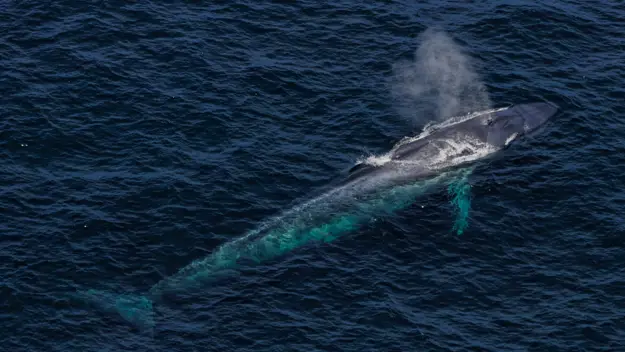Many people are surprised to learn that there are penguins in the St. Lawrence River! But wait – we’re not talking about the classic penguins associated with Antarctica, but rather a very special species: the razorbill, or little penguin.
This small seabird lives in the Northern Hemisphere, particularly along the Atlantic coasts and in the St. Lawrence Estuary. What makes it especially interesting to us? It has chosen to nest on an isolated rock in the Isle-aux-Grues archipelago, not far from Québec City!
A Rare Colony
Unsurprisingly, the presence of razorbills attracts a lot of enthusiasts. In fact, a team from Radio-Canada recently joined us on a special cruise to learn more about this species.
Every spring, the Lachance captains set sail for a unique adventure: the Razorbill Observation Cruise.
“During the cruise, we do a full tour of the Isle-aux-Grues archipelago, from east to west. But the cherry on top is really the colony of razorbills nesting on the Pilier de Bois, a rocky islet in the middle of the river.”
– Jean-François Lachance, captain at Croisières AML
What makes this colony so exceptional? It’s the only one in North America found so far inland! Each year, the razorbills return to breed for a short time before heading back out to sea. That gives us just a few weeks to observe them! 🙌
Small but Mighty!
Razorbills are easy to recognize by the white and grey stripes on their beaks and at the base of their wings. Excellent swimmers and underwater hunters, they feed mainly on small fish like capelin and sand lance. What sets them apart? Their small size — just 37 to 39 cm long — much smaller than their cousins!
💞 A Faithful Species
During the breeding season, which begins around mid-April in Quebec, new pairs of razorbills form while returning couples reunite. Like other penguin species, the female lays only one egg per year, making each birth especially precious!
Few species stay together for life, but razorbills are the exception: each summer, they find their previous year’s partner again, despite months of winter separation. Romantic, isn’t it? 😉
The Great Departure
Unlike their Antarctic cousins, razorbills can fly! After hatching, the chicks stay in the nest for a few weeks before spreading their wings.
Then in August, it’s the great departure: all the birds leave the colony to migrate to their winter grounds. In the following years, the young will return each summer to their birthplace, though they won’t begin breeding until they’re 4 or 5 years old.
An Experience Not to Be Missed
The Razorbill Observation Cruise is more than just a trip on the river — it’s a rare opportunity to admire these seabirds in their natural habitat, set against a breathtaking backdrop. As a bonus, you’ll discover the stunning and little-known islands of the Isle-aux-Grues archipelago.
📅 Don’t wait — this cruise is only available until June 30!







